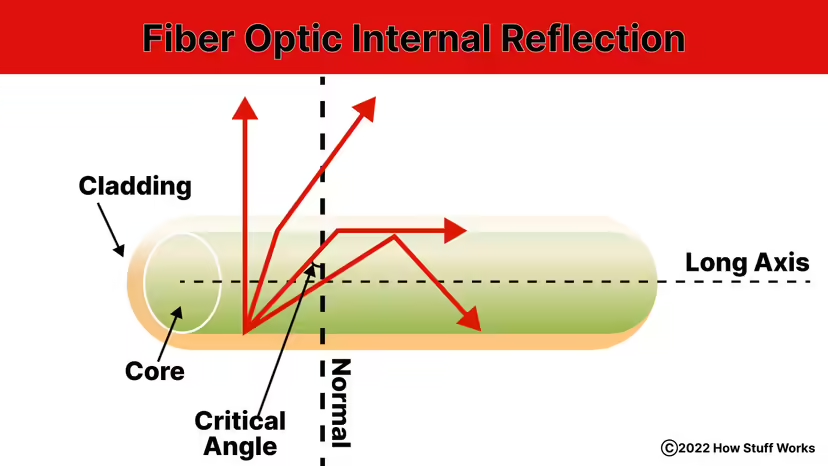
Who is Narinder Singh Kapany?
Narinder Singh Kapany may be a name you’ve likely never heard before, but his work on fiber optics is the reason why you are able to read this blog. When I first learned about Kapany, I knew I wanted to write something about this remarkable man. This blog partially chronicles his biography, and some parts discuss how fiber optics could have potentially earned an Indian a Nobel Prize.
Boyhood
Born on October 31, 1926, in Moga, Punjab, British India (now part of Punjab, India), Narinder Singh Kapany was surrounded by intellectual minds since childhood. This environment may have influenced his later pursuit of science and research. From an early age, he was fascinated by technology and curious about how machines functioned. He was often found experimenting and building contraptions.
Driven by his curiosity, he attended Agra University. In one such class, when his teacher was explaining why light travels in a straight path, he asked his teacher, ‘But why does it always travel straight?’ His teacher probably assumed that he was trying to disturb the class, so he dared him to bend light. At that moment, his teacher didn’t know that he was going to ignite a spark in this young boy that would change the course of human history.
Forged in fire
After completing his his studies in Agra University and getting a degree in Bsc(bacherlor’s of science) he went in IOFS(indian ordnance factory services) which used to build binoculars for Indian military, which was a good place to study more on light according to Narinder.
“Let there be light!”
After travelling to England to pursue his education, Kapany began working with a man by the name of Harold Hopkins. In the 1950s, they both began working together to enhance image transmission via optical fibres. Together, they made history in 1953 when they were able to send high-quality images across an optical fibre bundle for the first time. This achievement set the stage for the widespread and useful application of fibre optics.
The first book on fibre optics, “Fibre Optics: Principles and Applications,” was written by Kapany and released in 1967. This groundbreaking study laid the groundwork for subsequent studies and advancements in the subject by offering a thorough review of the concepts and uses of fibre optics. Writings and research contributions by Kapany were quite important.
It is widely acknowledged that Kapany made significant practical contributions to the field, particularly in translating theoretical concepts into functional applications. Conversely, Hopkins’ contributions were primarily theoretical in nature. It is often asserted that without Kapany’s efforts to implement Hopkins’ ideas, the practical applications of his research would have remained obscure and inaccessible to many.
Light speed travel
Kapany made fiber optics do something amazing, they made it transmit light signals over long distances using thin strands of glass or plastic utilizing a phenomenon called total internal reflection. With which he basically turned light into a way to send messages.

Who won the nobel prize?
Charles Kuen Kao won the Nobel Prize in Physics 2009 for explaining the importance of using high-purity glass, particularly fused silica (silicon dioxide), in optical fibers for effective light transmission. This is because impurity in glass can lead to loss of in signal also known as attenuation.
Loss
Despite of the fact that Charles made a significant contribution to the field of data transmission through Fiber Optics cable, it makes more sense that the researchers who made it the reality should have won the Nobel Prize but Hopkins and Kapany didn’t win it.
In November 1999, he was identified by Fortune as one of the seven “unsung heroes who greatly influenced life in the twentieth century” and Kapany was also on Time Magazine’s list of top ten scientists of the 20th century in Time’s last issue of 1999.

Conclusion
Narinder Singh Kapany’s journey from the curious kid in his birth place, Moga, Punjab, to the pinnacle of optical fiber technology is a proof that curiosity, devotion, and networking are powerful factors. The collaboration of him with Harold Hopkins yielded great progress in fiber optics, and made it possible to send light signals over long distances, and as a result, communication was revolutionized. While the Nobel Prize awarded to Charles Kuen Kao recognized the contribution of high-grade glass in optical fibres, it is equally clear that Kapany and Hopkins were the driving force behind the practical implementation of these concepts. Even though they never received the Nobel Prize for their work, their contributions will continue to be essential and define the telecommunications landscape of today. The Kapany legacy is not only limited to the awards; he is held in high esteem as an unsung hero of the twentieth century, an icon whose imprint on the fields of science and technology will never be forgotten. The fiber optics world is a great development, and we have to thank those people, like Narinder Singh Kapany, who had the courage to be curious and innovative for making the world brighter.
